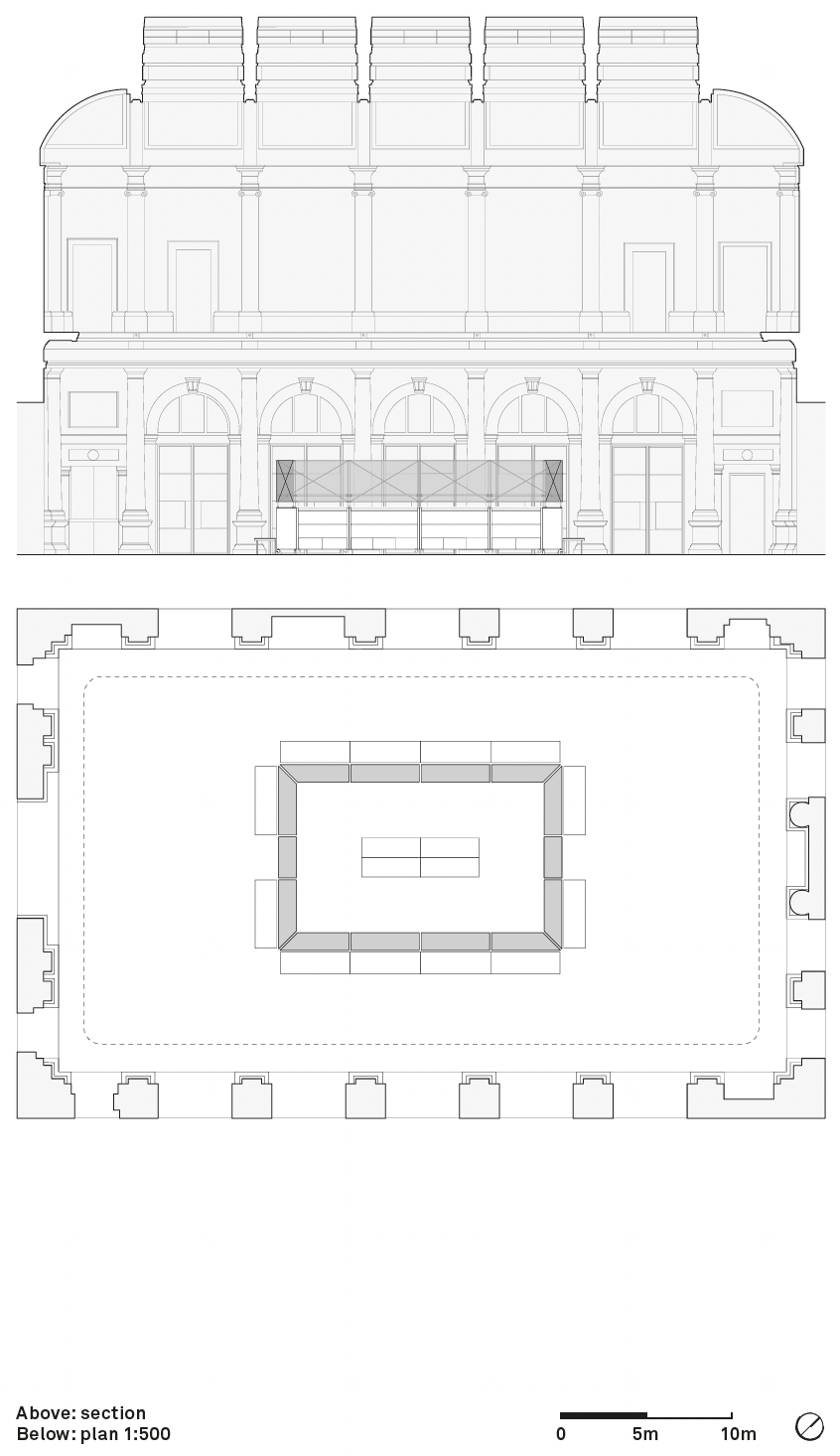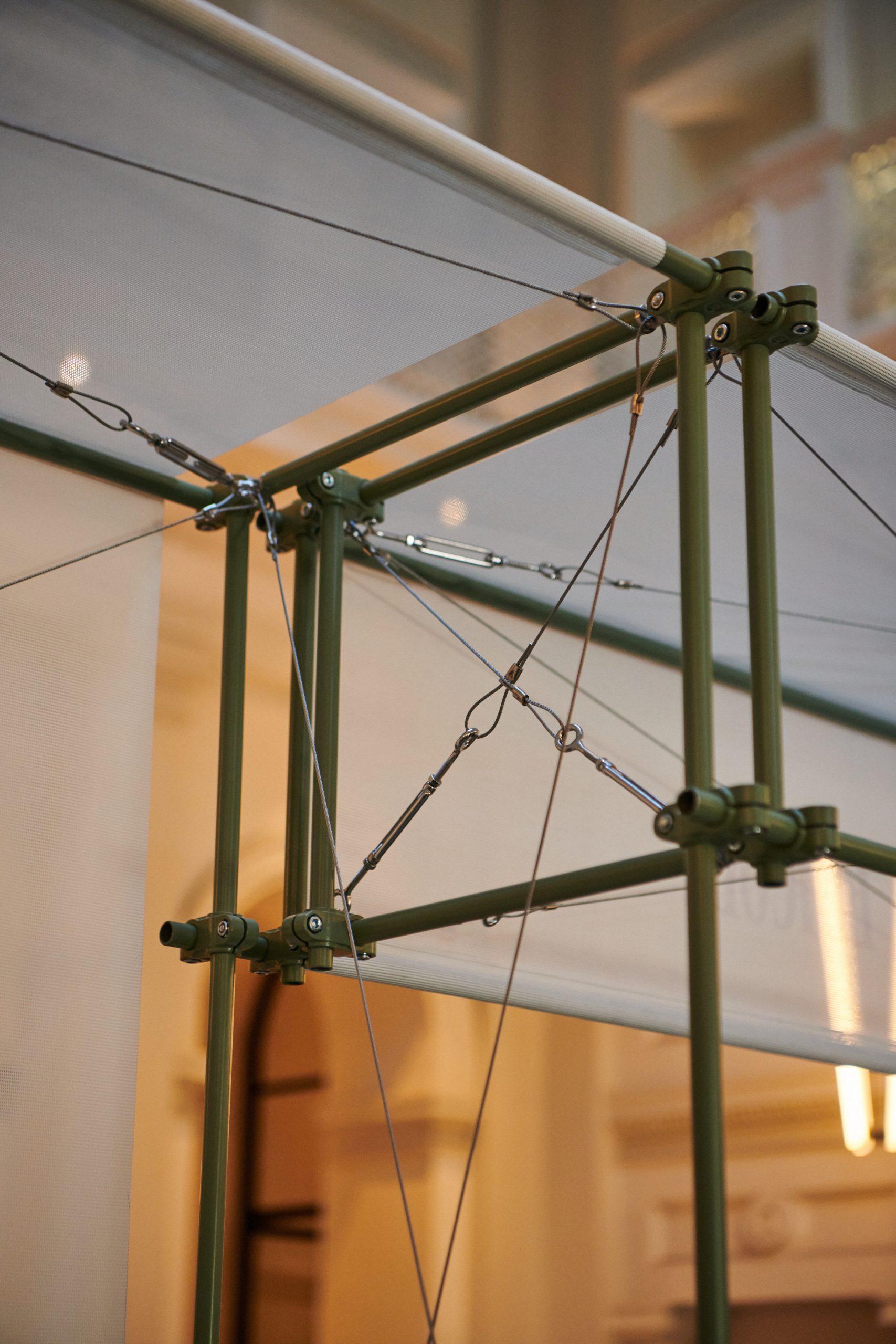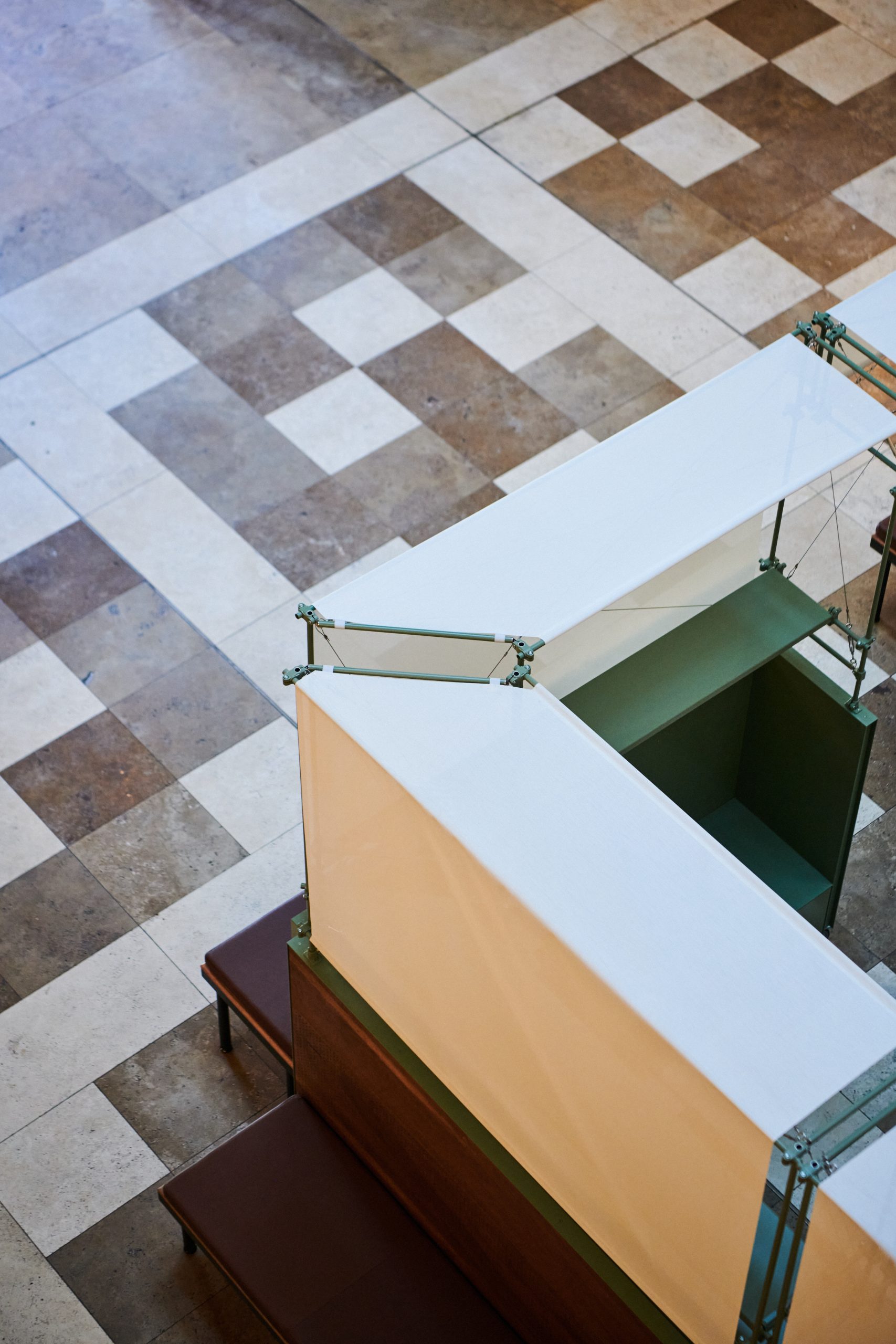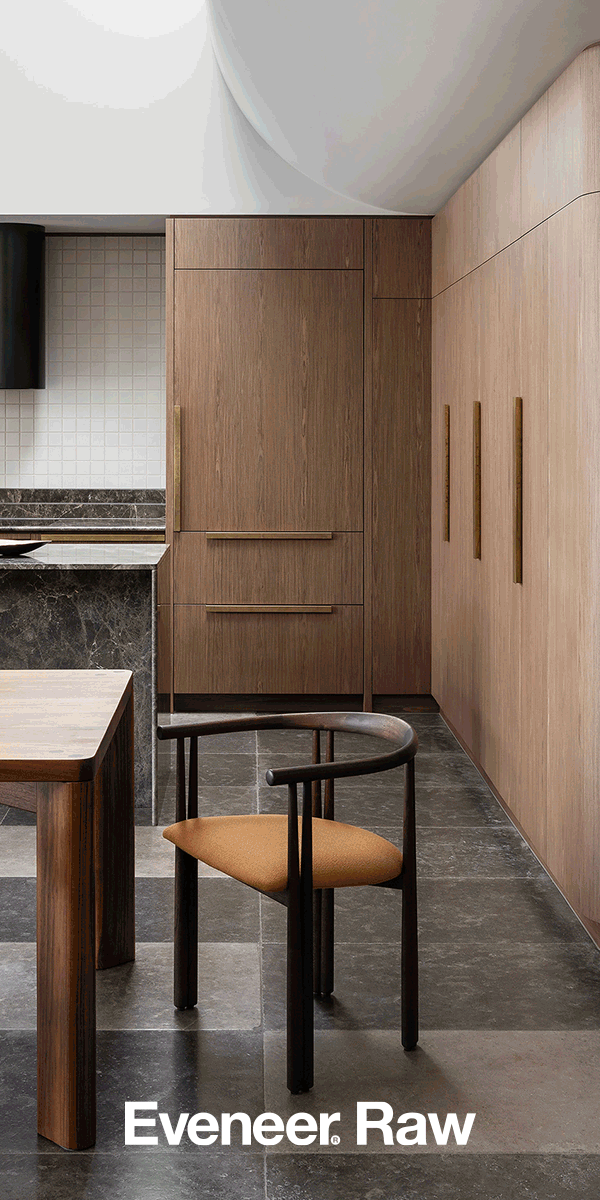Kate Goodwin catches up with architectural practitioner, advocate and Palawa woman Sarah Lynn Rees – recipient of the Australian Institute of...
Crafting the New Civic
Situated in Perth’s Postal Hall, a new bookshop by architectural practice Trower Falvo with Alessio Fini Design is at once structure and sculpture, refiguring civic space with an expansive, generous and fluid approach at the intersection of form and material.
Essay
Belqis Youssofzay
Photography
Duncan Wright
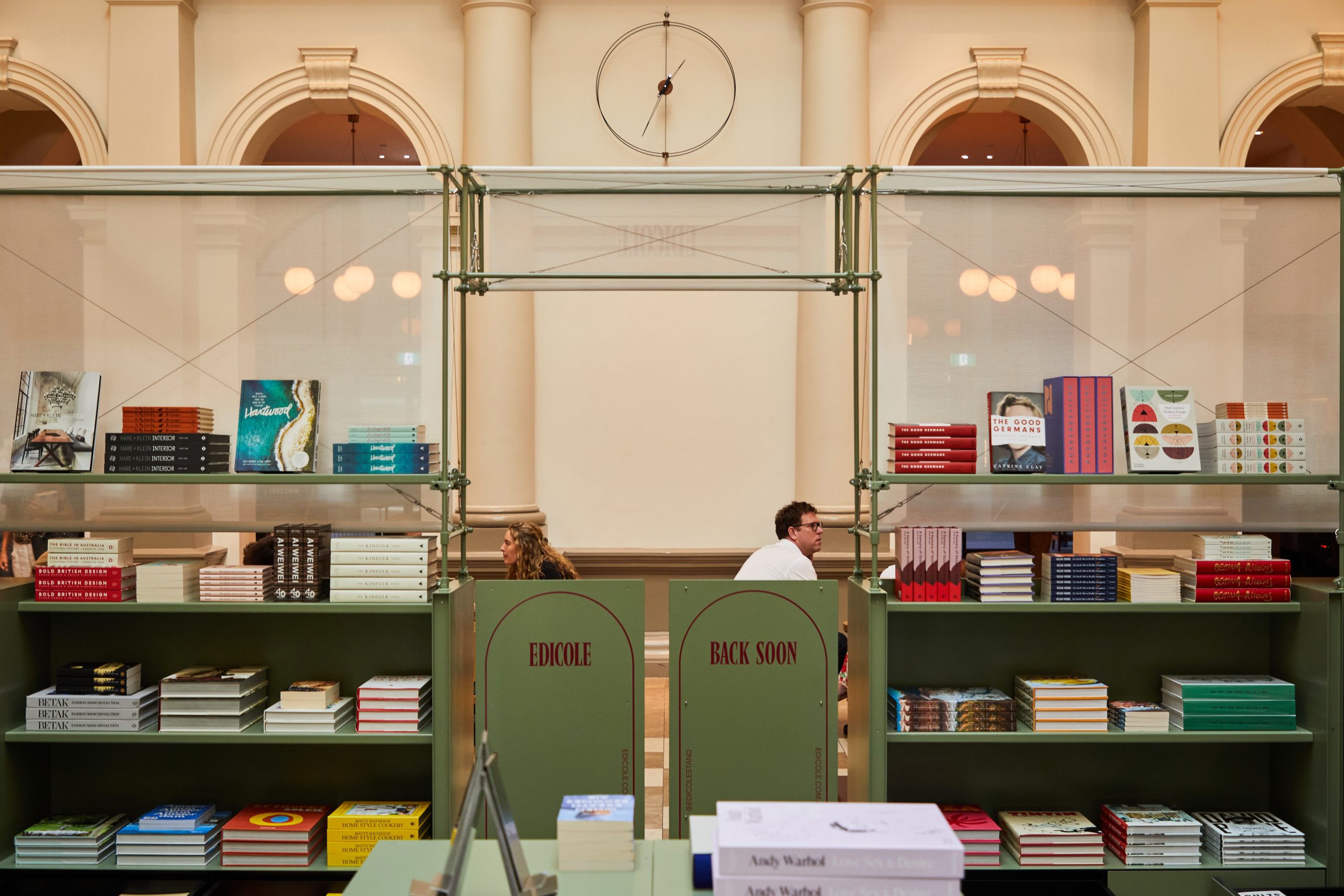
The pandemic has irrevocably changed civic space within cities.
In its aftermath a new kind of temporal architecture has emerged – drawn from fluorescent tape, soft rope and clear acrylic that demarcates civic zones within public spaces. Seemingly innocuous, these interventions are in fact potent new tools deployed in post-pandemic city-making to expand zones of exclusion. Within this context, Tower Falvo’s Postal Hall Bookshop delivers an interesting proposition for a newly emerged civic space and its associated tectonics.
The mobile bookshop, commissioned within the Postal Hall in Perth, is the first public project by young Melbourne-based practice Trower Falvo in collaboration with Alessio Fini Design. Conceived pre-pandemic, the project eschews the tropes associated with temporal commercial architecture. Instead, it offers an example of ephemeral architecture that is grounded by principles of civic generosity expressed through the intricate mechanisms of systemised construction. To comprehend the project’s careful balancing act, oscillating between a public gesture and carefully crafted object, it is important to read the project across two scales.
Trower Falvo draws heavily on the grand scale and details of Perth’s former General Post Office and government offices. Situated at the heart of the State Buildings’ complex, the project site offers a generous light-filled atrium, with gantry on the first floor and a patterned stone ground floor open to high volumes of foot traffic. In a nod to the timber partitioned postal booths of times past, the bookshop is comprised of a series of low modules that occupy the main axis of the building’s ground plane. The floor is used to anchor the moveable modules, the dimensions designed to correspond to the repeating stone pattern. When assembled, the low-walled structure creates an ambiguous edge between the existing building and interior of the bookshop and forms a gateway across the axis of the atrium to honour the established thoroughfare. The pragmatics of the project informed by the brief – to be demountable, lightweight and mobile – are carefully negotiated within this context. The entire bookshop, envisaged as demountable modules on castors, can be cleared out of the atrium within half an hour, and maneuvered through the building’s existing doorways into a back-of house storage space.
While the assembled whole responds in scale and geometry to its urban setting, crafting the small-scale componentry offers an elegant counterpoint. From afar, the bookshop appears as a solid podium of warm timber with a fabric canopy above it. Up close, this visual simplicity disintegrates into a chorus of considered component parts – an exterior of warm hardwood and leather, an interior of deep green aluminium sheeting and diaphanous fabric tensioned into place by elegant assemblies of clamps and wire.
Much like the discardable fluorescent tape or rope, the tectonics of this structure are also made from the ready-made, everyday – cross clamps, turnbuckles, steel wire and key rings all held together in a composition that renders the construction more a mechanical instrument than a work of architecture. The architects cite the work of Lawrence Hargrave and his early kite studies as an important reference for this project. “The design of the Postal Hall in 1890 coincided with the work of Australian inventor and designer Lawrence Hardgrave’s first flight,” notes Dayne Trower. “We were referencing his work when looking at ideas of partitions, lightweight structure and studies of cellular kites to respond to concerns of weight, demount-ability and storage. In terms of the tectonics, we are interested in the details and componentry of architecture and how it fits together to achieve a whole.”
Australian architects have long been fascinated by lightweight structures of the sea and sky, adapting them within their architecture. Richard Leplastrier’s Watson’s Bay House (1997–98) and Glenn Murcutt’s MPavillion commission (2020) both deploy fabric canopies above a solid base. In both projects, allusions to sailing and flight are co-opted for making shelter. In Postal Hall Bookshop, the fabric canopy is a shelter to protect the books from dust and glare, but also a device to introduce lightness. The softness of the fabric against the solidity of hardwood and aluminium visually liberates the structure from notions of permanence. The seams and tautness of each fabric module tensioned over a lithe frame recall the kites of Hardgrave, threatening to float up towards the atrium skylight. The design is deft both in structure and expression, speaking to its temporality as an artefact and its precarious place in contemporary civic space.
Trower Falvo’s interest in crafting artefacts is evident in their small but considered body of work. From meticulously resolved scale models to 1:1 window-to-wall junction drawings for their houses, the practice engages across varied scales to achieve a refinement of form and detail.
For the bookshop, ultimately it is the positioning of this artefact within the pre-existing site that informs its civic agenda. Here, the ubiquitous commercial bookshop – often tucked into the forgotten depths of shopping malls – is centralised and democratised through design. The openings to the bookshop formalise the axis of the Postal Hall thoroughfare, establishing a generous entry into the atrium by removing any formal thresholds. This, along with the inclusion of edge seating outside each module – untethered to the commercial endeavours of the bookshop – is an act of civic generosity. Serving as a place of rest for the everyday public, in busy times the addition of tables means the seating can also be enlisted for use by cafe tenants. Moreover, the bookshop in its entirety can be removed from the atrium to accommodate functions such as weddings.
“It has a sense of entity, scale and identity in the space and it doesn’t interrupt the grandness of the Postal Hall,” notes Simona Falvo. “This was an important concern for the operators. So we maintained visibility and balanced the bookshop as an entity in the space while establishing a relationship with other tenancies at the perimeter of the Hall.”
The adaptability and temporality of the bookshop speaks to new possibilities for city infrastructure. At the height of the pandemic, the many impermanent objects within the public domain – seats, tables, ephemera – were wrapped in bright yellow cautionary tape and rendered unusable. All that was temporary was muted. The bookshop demonstrates an agility in negotiating with its setting and its ability to reconcile a refined work of architecture with the commercial agenda associated with its use. As a civic gesture and an artefact, it aspires to endure and defies becoming post-pandemic urban detritus.
Featured in Union Issue 02.
